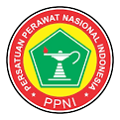Kajian Minyak Serai Wangi (Cymbopogon nardus L.) terhadap Aedes aegypti
DOI:
https://doi.org/10.26630/jk.v12i2.2660Keywords:
Aedes aegypti, Citronella grass, Essential oil, Resistance.Abstract
The Aedes aegypti mosquito can develop an immune system against the insecticide used. Control efforts with the use of insecticides are no longer effective if the target insects have become resistant. So there needs to be an effort to overcome the insect resistance that is targeted. Citronella grass is an herbal plant that can be used as an ingredient in vegetable pesticides. The leaves and stems are distilled to produce essential oil known as citronella oil. This research is about studying the effects of citronella oil against the resistance of the vector carrier for dengue fever, namely Aedes aegypti. The detection of citronella essential oil (Cymbopogon nardus L.) by Thin Layer Chromatography showed a reduction in UV254 visualization (Rf 0,68). The resistance test showed that the mortality percentage of adult mosquitoes Aedes aegypti exposed to 0.03% alphacymethrin was 73,7% resistant criteria (<90%). The mortality percentage of adult mosquitoes Aedes aegypti exposed to Alphacypermethrin (0,03%) and citronella oil was 2,5% each; 5%; 7,5% and 10% with treatment time 15 respectively, namely 18,7%, 50,7%, 70,7% and 82,7%; the treatment time of 30 minutes consecutively is 62,7%, 89,3%, 96% and 97,3% and the treatment time is 60 minutes respectively, namely 93,3%, 98,7%, 98,7% and 100%. There was an increase in the percentage of mosquito deaths exposed to the combination of alphacypermethrin and citronella oil, compared to those without citronella oil, this indicates that mosquitoes are more susceptible and resistance has decreased due to exposure to citronella oil.Â
References
Astuti, E. P. (2012). Pemisahan Sitral Dari Minyak Atsiri Serai Dapur ( Cymbopogon citratus ) Sebagai Pelangsing Aromaterapi. [Skripsi]. Bogor: Institut Pertanian Bogor.
Djojosumarto, P. (2008). Pestisida dan Aplikasinya. Jakarta: Agromedia Pustaka.
Kiswanti, D.E. (2009). Pemanfaatan Karagenan yang Ditambahkan Minyak Sereh Wangi pada Formula Gel Penolak Nyamuk Culex quinguefasciatus. [Skripsi]. Bogor: Program Sarjana, Institut Pertanian Bogor.
Kementerian Kesehatan RI. (2012). Pencegahan dan Pemberantasan Demam Berdarah Dengue (Buku ke 2). Kemenkes RI.
Mutchler, E. (2010). Dinamika Obat: Buku Ajar Farmakologi dan Toksikologi. Edisi 5. Diterjemahkan oleh Widianto, M dan A.S. Kanti. ITB. Bandung.
Nurminha, & Sulistianingsih, E. (2019). Pola resistensi Nyamuk Aedes aegypti Terhadap Insektisida Alphacypermethrin di Daerah Endemis DBD Provinsi Lampung Tahun 2019. Laporan Hasil Penelitian Politeknik Kesehatan Tanjungkarang.
Notoatmodjo, S. (2010). Metodologi Penelitian Kesehatan. Jakarta: Rineka Cipta
Pradani, Y., Mara, I., Rina, M., & Yuneu, Y. (2011). Status Resistensi Aedes aegypti dengan Metode Susceptibility di Kota Cimahi terhadap Cypermethrin. Jurnal Aspirator, 3(1), 18-24.
Puslitbang. (2012). Fungsi pestisida nabati (Cetakan II, Issue April). Pusat Penelitian dan Pengembangan Perkebunan, Badan Penelitian dan Pengembangan Pertanian, Kementerian Pertanian.
Rondonuwu S.J., Langi, Y.A.R. (2006). Minyak sereh dalam pengendalian populasi Aedes spp. Eugenia 12 (3): 258-261. http://www.nri.orgprojectsadapptdocs63-84pdf.
Untung, K. (2001). Pengantar Pengelolaan Hama Terpadu. Yogyakarta: Gadjah Mada University Press.
Wahyudin, D. (2009). Uji Kerentanan Nyamuk Vektor Aedes aegypti Terhadap Insektisida yang Digunakan dalam Program Pengendalian Demam Berdarah Dengue (DBD) di Kota Cimahi Provinsi Jawa Barat. [Tesis]. Yogyakarta: Universitas Gadjah Mada.
Wahyuningtyas, E. (2004). Studi Daya Proteksi Serai Wangi (Cymbogopogon nardus (L.) Rendle) sebagai repelen terhadap nyamuk Aedes aegypti Linnaeus. [Skripsi]. Bogor: Program Sarjana, Institut Pertanian Bogor.
Wardani, S. (2009). Uji Aktivitas Minyak Atsiri Daun Dan Batang Serai (Andropogon Nardus L ) Sebagai Obat Nyamuk Elektrik Terhadap Nyamuk Aedes Aegypti. [Skripsi]. Surakarta: Universitas Muhammadiyah Surakarta.
WHO. (2011). Comprehensive guidelines for prevention and control of dengue and dengue haemorrhagic fever. WHO Regional Publication SEARO (Issue 1). https://doi.org/10.1017/CBO9781107415324.004
WHO. (2016). Monitoring and managing insecticide resistance in Aedes mosquito populations: Interim guidance for entomologists. Geneva: WHO Press. https://apps.who.int/iris/bitstream/handle/10665/204588/WHO_ZIKV_VC_16.1_eng.pdf.
Widiarti, Heriyanto, B., Boewono, D., Mujioni, Lasmiati, & Yuliadi. (2011). Peta resistensi vektor demam berdarah dengue Aedes aegypti terhadap insektisida kelompok organofosfat, karbamat dan piretroid di Provinsi Jawa Tengah dan Daerah Istimewa Yogyakarta. Buletin Penelitian Kesehatan, 39(4), 176-189.
Downloads
Published
Issue
Section
License
Authors who publish in this journal agree to the following terms:
- Authors retain copyright and grant the journal right of first publication with the work simultaneously licensed under a Creative Commons Attribution License (CC BY-SA 4.0) that allows others to share the work with an acknowledgment of the work's authorship and initial publication in this journal.
- Authors can enter into separate, additional contractual arrangements for the non-exclusive distribution of the journal's published version of the work (e.g., post it to an institutional repository or publish it in a book), with an acknowledgment of its initial publication in this journal.
- Authors are permitted and encouraged to post their work online (e.g., in institutional repositories or on their website) prior to and during the submission process, as this can lead to productive exchanges and earlier and greater citations of published work.












